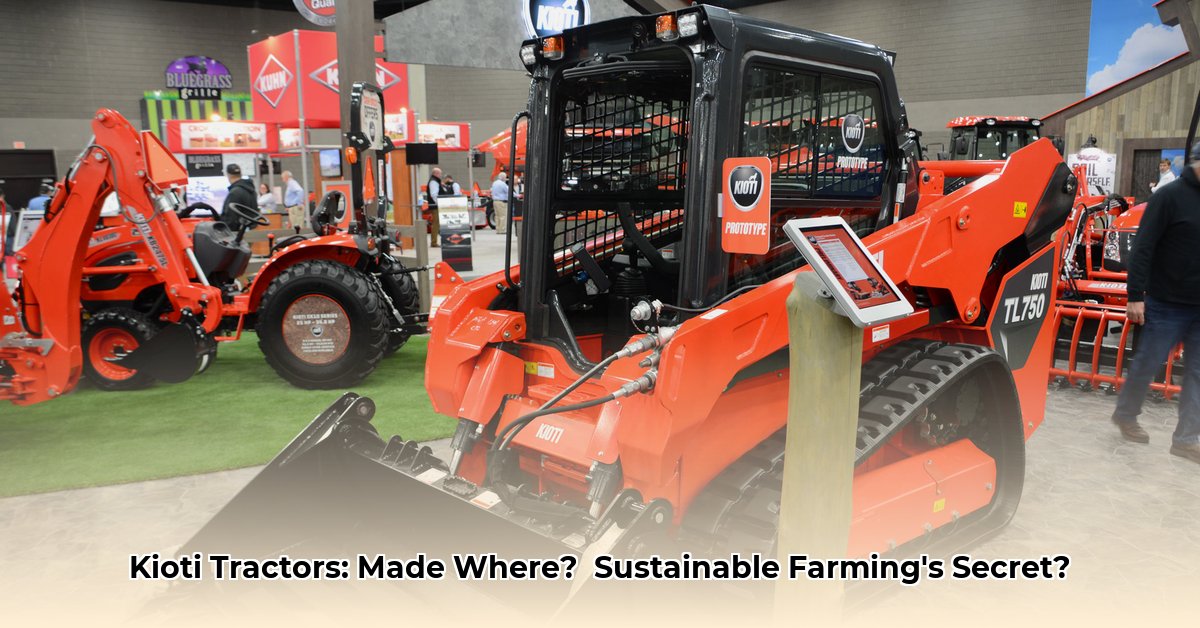
Imagine a small farmer in Iowa, their weathered hands gripping the steering wheel of a bright red Kioti tractor. The machine, a testament to affordability and resilience, effortlessly tills the soil, preparing the land for a bountiful harvest. This scene, replicated across continents, highlights the significant role of Kioti tractors in global agriculture. But the story of Kioti's success is multifaceted, weaving together a complex tapestry of global manufacturing, cost-effectiveness, and the ever-present challenge of sustainability. This article delves into Kioti's manufacturing footprint, examining its impact on affordability, the environmental considerations, and charting a path towards a more sustainable future. For comparison, see where other tractor brands are manufactured, like [Massey Ferguson](https://where-are-massey-ferguson-tractors-made.pages.dev).
Kioti's Global Manufacturing Footprint: A Strategic Network
Kioti tractors, a product of Daedong Corporation, aren't manufactured in a single location. Their production strategically spans several countries, reflecting a complex interplay of cost optimization and market proximity. Major manufacturing operations are centered in South Korea, leveraging the nation's advanced manufacturing capabilities. To better serve the North American market, significant manufacturing also takes place within the United States. Furthermore, partnerships in China and India facilitate efficient distribution within those massive markets. This dispersed approach allows Kioti to minimize shipping costs and respond more effectively to regional demands. But how does this globalized approach affect sustainability?
Affordability and Accessibility: A Powerful Combination
One of Kioti's key strengths lies in its affordability. Compared to competitors, Kioti tractors often present a more accessible price point, making them crucial for smaller farms and farmers in developing nations. This affordability directly impacts the sustainability of farming practices, allowing farmers to invest in modern equipment while maintaining economic viability. However, this price advantage raises questions about the potential trade-offs in environmental impact and supply chain sustainability—a balance that requires careful examination. What are the hidden costs of this affordability, and how can we ensure it aligns with environmental responsibility?
Sustainability Considerations: A Path Towards Transparency
While Kioti's affordability directly supports sustainable agriculture practices by making modern equipment more accessible, significant challenges remain regarding the environmental impact of its globalized manufacturing. Currently, comprehensive data on Kioti's complete carbon footprint is limited, hindering a full assessment of its environmental impact. This lack of transparency extends to supply chain vulnerabilities; disruptions in any key region could significantly impact global production. Moreover, although smaller Kioti models generally exhibit better fuel efficiency, a thorough lifecycle assessment (LCA) is needed to fully quantify the environmental impact across the entire production process. We need to understand the complete picture—from raw material sourcing to end-of-life disposal—to truly grasp Kioti's environmental performance.
Actionable Steps: A Collaborative Approach to Sustainability
Improving the sustainability of Kioti's manufacturing requires a collaborative effort involving Daedong Corporation, farmers, consumers, and governing bodies.
For Daedong Corporation:
- Comprehensive LCA: Conducting a thorough lifecycle assessment is paramount to understanding the total environmental impact of Kioti tractor production.
- Supply Chain Resilience: Diversifying the supply chain and implementing robust risk management strategies are crucial in mitigating disruptions.
- Circular Economy Principles: Incorporating circular economy principles, such as designing tractors for easier repair and component recycling, will minimize waste and reduce the environmental footprint.
For Farmers and Consumers:
- Demand Transparency: Consumers can drive change by demanding greater transparency regarding the environmental impact of the tractors they purchase.
- Sustainable Purchasing Decisions: Choosing tractors with strong environmental certifications, such as those meeting stringent emission standards, directly supports sustainable manufacturing practices.
For Governments and Regulators:
- Incentivize Sustainable Practices: Governments can incentivize sustainable manufacturing through policies that reward environmentally responsible practices.
- Strengthen Emission Standards: Stricter emission regulations will push manufacturers to adopt cleaner technologies.
Conclusion: A Future of Sustainable Farming
Kioti's success story is interwoven with the future of sustainable agriculture. By proactively addressing the challenges of transparency, supply chain resilience, and environmental impact, Kioti can solidify its position as a leader in responsible agricultural technology. This journey requires ongoing commitment, collaboration, and a shared vision for a more sustainable future. The path forward necessitates transparency, collaboration, and a commitment to continuous improvement—a path that will not only benefit the environment but also secure Kioti's long-term success.